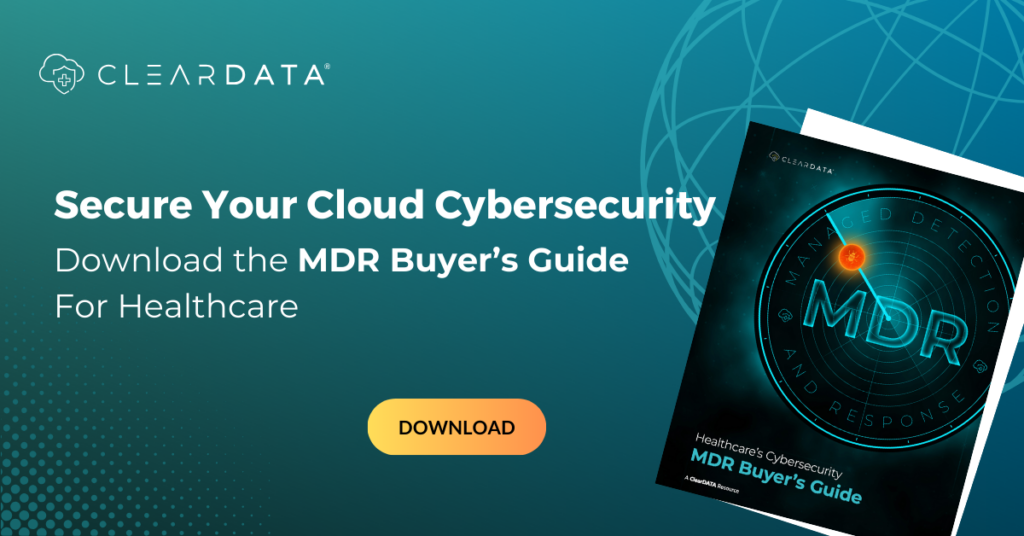Driving Urgent Change to Optimize the Patient Experience
“The current state of patient experience and clinical efficiency in healthcare is untenable and requires immediate action.“
Healthcare—and protecting its data—is my job, and it means I consider the patient first and foremost. To me, the “patient journey” and optimizing those experiences is critical. Still, on a personal level, there are instances when my interactions with the industry have stirred a range of emotions, from perplexity to outright anger, prompting me to reflect on the concept of the patient journey that I hear my peers talking so much about.
My most recent healthcare journey began with a fall that left one of my family members with a cracked rib and the need for a partial knee replacement. What followed was an infuriating ordeal through a fragmented healthcare system that seemed more intent on serving its bureaucratic processes than its patients. Appointments were elusive, follow-ups were nonexistent and coordination burdens fell heavily on us—the patient and their family members. Each step felt like an uphill battle against a system that should have been our ally, not our adversary.
This isn’t a “journey.” This is a solo trek up Mount Everest!
We have all been patients or patient advocates for our loved ones before, so this story is probably quite familiar to anyone reading it. I know my latest experience and frustration with healthcare delivery—our difficulty communicating with providers, and the challenges of coordinating ongoing and proactive care—is far from unique.
So, what’s going wrong? The root of these challenges often lies in a misalignment of priorities. In an industry overburdened by regulatory requirements and financial constraints, patient experience often takes a backseat. Many healthcare providers are caught in a cycle of reactive care, treating symptoms rather than addressing the underlying causes of inefficiency. Patients often wait weeks for essential test results, if they receive them at all.
Physicians are the front-line defenders of patient health, yet when patient needs are not prioritized, the entire healthcare system suffers.
Patients feel they need a translator to interpret medical jargon in speedy consults with trusted physicians. This approach not only diminishes patient trust but also impacts health outcomes, leading to higher costs and poorer satisfaction.
Startling Statistics
• Skipped or delayed care: A 2023 survey from The Harris Poll found that nearly 44% of adults skipped or delayed necessary care in the two years prior, largely due to concerns over cost and the challenge of balancing healthcare with other responsibilities. Additionally, 30% of patients felt rushed during appointments, further reducing their willingness to engage with the system.
• Impact of workforce shortages: The healthcare workforce is stretched thin, and 71% of Americans worry that these shortages will negatively impact their care.
• Overwhelming coordination: Many patients perceive the healthcare system as daunting, with the same Harris Poll revealing that 65% of U.S. adults find managing their healthcare to be both overwhelming and time-consuming. On average, patients dedicate eight hours each month to coordinating their care, which contributes to significant frustration and often leads to avoidance of necessary medical attention.
• Care delays due to frustration: One in three Americans delayed or skipped medical care in the past five years due to a negative healthcare experience or difficulty securing a timely appointment. The systemic flaws are particularly pronounced among younger adults and women, who are disproportionately affected by these barriers.
Tangible Steps For Patient-Centric Care
To combat patient nightmares like these, there must be a cultural shift toward truly valuing and integrating the patient voice into every aspect of care delivery. This transformation requires leadership that actively champions patient-centered care as a core organizational value.
• Adopt a proactive care model: To enhance patient care, healthcare organizations should transition from reactive to proactive strategies by utilizing predictive analytics and personalized care plans. Through data analytics and remote monitoring for chronic conditions, healthcare professionals can identify at-risk patients and provide timely interventions. This takes a holistic approach that addresses physical, emotional and logistical needs while emphasizing flexible and tailored care models with continuous feedback to refine the patient experience.
• Implement interoperable health systems: Healthcare leaders should invest in technology that enables seamless data sharing across all levels of care. When healthcare organizations adopt interoperable electronic health records (EHRs), patients and providers gain greater access to complete medical histories, facilitating better-informed decisions and reducing redundant tests. For example, initiatives like the Fast Healthcare Interoperability Resources (FHIR) standard can create consistent data exchange protocols, ensuring that critical patient information is available whenever and wherever needed.
• Enhance patient engagement through digital tools: Mobile apps and patient portals should be used to improve communication and engagement. These platforms can provide patients with easy access to their health information, appointment scheduling, medication reminders and direct messaging with healthcare providers. A practical example is the use of telemedicine services, which not only offer convenience but also cater to the specific needs of patients who may have difficulty accessing in-person care, thus enhancing their overall experience.
Digital technology leaders have a unique opportunity to enhance interoperability and streamline processes that currently hinder patient efficacy. Using a proactive care model, embracing interoperability, and adopting digital tools creates a seamless flow of information that empowers both patients and providers alike.
Looking Ahead To The Ideal Patient Experience
The current state of patient experience and clinical efficiency in healthcare is untenable and requires immediate action. A significant part of the solution lies in harnessing technology and embracing empathy to bridge the gaps in patient care. The only way forward is to prioritize patient needs, embrace technological advancements and foster a culture of continuous improvement. That’s how we can transform healthcare into a system that is not only efficient but also compassionate and responsive.
As digital technology leaders and healthcare professionals, we have a responsibility to drive change that truly puts patients at the center of care. Let us rise to the challenge and ensure that every patient receives the care and respect they deserve, without the added burden of navigating a complex and unyielding system.
It’s time to do better, think differently and protect the very people we are here to serve.
Chris Bowen, ClearDATA CISO & Founder is a member of the Forbes Technology Council.
Original Article Published in the Forbes Technology Council.



